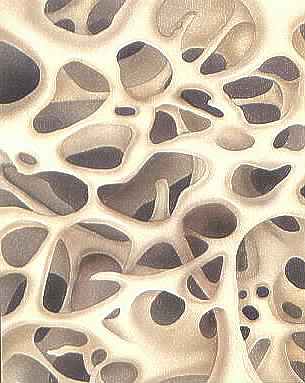OSTEOPOROSIS
Osteoporosis is a preventable condition that all women and men need to be concerned about. Osteoporosis is the rapid reduction of bone mass and architecture that leaves them fragile and susceptible to fractures. Fortunately, current treatment offers hope by reducing risk factors for osteoporosis, and if one already has it, they can live with it comfortably and safely.
A successful treatment plan for the prevention of this potentially serious health problem is best initiated during early adulthood. The overall objective of preventive care is to initiate interventions and behaviors that will prolong and optimize long-term physical, mental and social well-being. Treatment is based on severity of bone loss, risk factor assessment, medical history and toleration of treatment.
Epidemiology:
- Affects about 28 million Americans.
- Accounts for 1.3 million fractures per year in the USA.
- One out every four women by the age of 70 develops an osteoporotic fracture.
- Fractures: >700,000 spinal, 300,000 hip, and 250,000 are wrist.
- About >10 billion dollars spent on osteoporosis-related fractures per year
How is osteoporosis diagnosed?
Evaluation of osteoporosis begins with a doctor’s evaluation. No specific blood test will identify osteoporosis or those at risk. However, there may be other causes of bone thinning that need to be evaluated. Plain x-rays are not very sensitive for identifying osteoporosis. By the time osteoporosis becomes evident on x-ray, there is already about 40-50% of bone loss. Because x-rays have limited use in determining the extent of bone loss, bone density scans should be considered.
When should a bone density scan be ordered?
- Patients with risk factors for osteoporosis
- X-ray evidence of osteopenia (thin bones on x-ray)
- Monitoring effectiveness of treatment and progressive of bone loss
- Post-menopausal women considering estrogen replacement therapy or other treatments
- Patients using steroids
- Patients with hyperparathyroidism
Is Hormone Replacement Therapy (HRT) for you?
General Osteoporosis Treatment Recommendations:
- Calcium: 1000-1500mg
- Not every calcium supplement is the same. Recommended doses of calcium do not result in kidney stones. The average calcium intake of elderly patients is 500mg per day. The recommended daily consumption is 1000mg of calcium per day.
- Vitamin D:400 IU daily
- Your body can’t absorb or utilize calcium without vitamin D, which can be found in most multi-vitamins.
- Exercise:
- Exercise can make the critical difference in preventing fractures. Regular physical activity is crucial for the health of your bones and helps to retard further bone loss. Exercises that increase muscular support of the bones and improve flexibility and balance are especially valuable. Exercise and physical activity at least 3 times a week for 30-40 minutes is recommended by the AHA.*
- Healthy Lifestyle:
- Alcohol: Heavy drinking can cause osteoporosis and is toxic to bones.
- Smoking: Reduces peak bone mass, causes early menopause, interferes with bone growth and ERT.
- Medications: Steroids and other medications increase bone loss.
- Diet: Salt and excess protein (also phosphorus) results in more calcium excretion.
- Caffeine: Increases loss of calcium in urine (includes coffee and cola).
- Inactivity: “use it or lose it”.
Men also develop osteoporosis, but often less severe and risk factors vary slightly.* Please see your doctor before starting an exercise program. Discontinue any exercise that causes pain.
Both men and women lose bone mass at different rates and not everyone is at high risk of fracturing. The main cause of osteoporosis in women is loss of the sex hormone estrogen. Estrogen levels fall rapidly after menopause rendering the bones to become thinner and weaker. Regardless of your risk, there are choices one can make throughout life, which will help maintain a healthy state of bone structure. Recent research findings recommend that Osteoporosis Treatment should begin in the late teens or early adulthood when peak bone mass is present; decades before signs and symptoms of osteoporosis develop. Peak bone mass is a direct determinant for future risk for osteoporosis. Peak bone mass is influenced by genetics, nutritional status, lifestyle, ovarian function, and other factors. Prevention should begin in adolescence.
Contact Us
13710 Olive Boulevard (Primary Office)
Chesterfield, MO 63017
Telephone: 314-469-PAIN (7246)
Fax: 314-469-7251
Exchange: 314-441-6965 (for after-hour Emergencies Only)
Hours:
Monday thru Friday
8:30 AM – 4:30 PM



